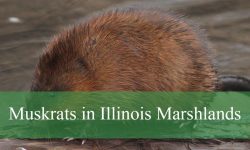Arizona is home to a diverse range of spiders, with various species adapting to the state’s unique environments.
From the vibrant Desert Red Jumping Spider (Phidippus ardens) with its striking red abdomen to the elusive Spotted Orbweaver (Neoscona crucifera) often found in attics and barns. Arizona spiders showcase a fascinating array of colors and behaviors.
Spiders in Arizona are integral to the ecosystem, controlling insect populations and exhibiting remarkable adaptations to their arid surroundings.
Different Types of Spiders in Arizona
Western Parson Spider
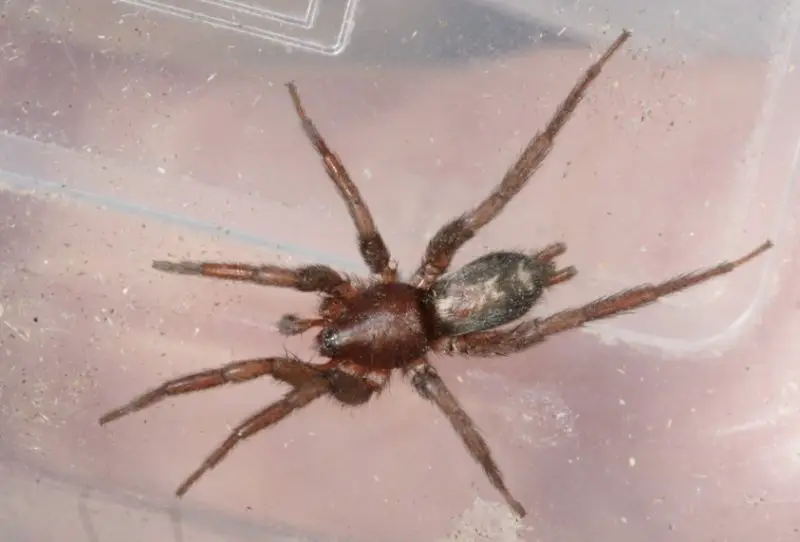
The Western Parson Spider (Herpyllus propinquus) is a medium-sized, hairy spider with a distinctive white stripe resembling an 18th-century clergy’s ruffled necktie. Nocturnal by nature, it spends its nights climbing walls and searching for insects, relying on ambush tactics rather than webs to catch prey. It prefers woodland areas, it occasionally wanders into homes.
Though its bite is not considered dangerous, some individuals may experience an allergic reaction.
Marbled Cellar Spider
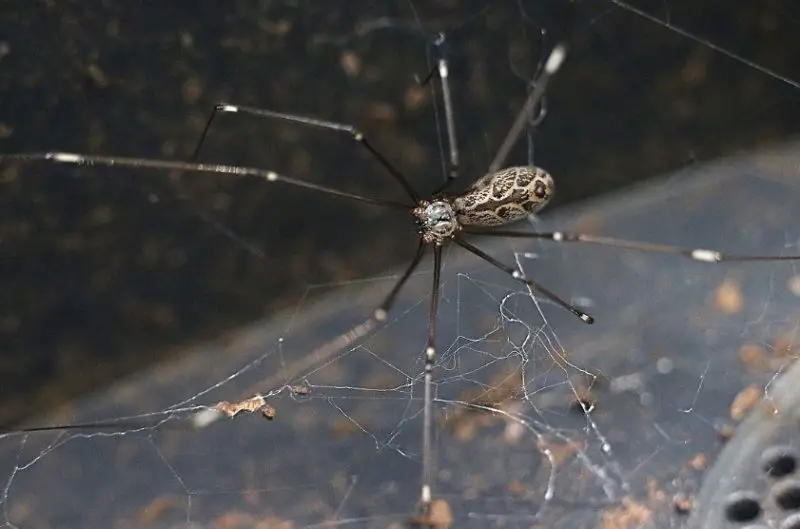
The Marbled Cellar Spider (Holocnemus pluchei), also known as a daddy long legs, is common throughout the North Pacific region of the United States. These spiders are often found in household environments such as basements, house eaves, and attics, where they spin their webs.
Both males and females are similar in size, with long legs adorned with distinctive black and white circles on the joints.
Hirsute Paradise Spider
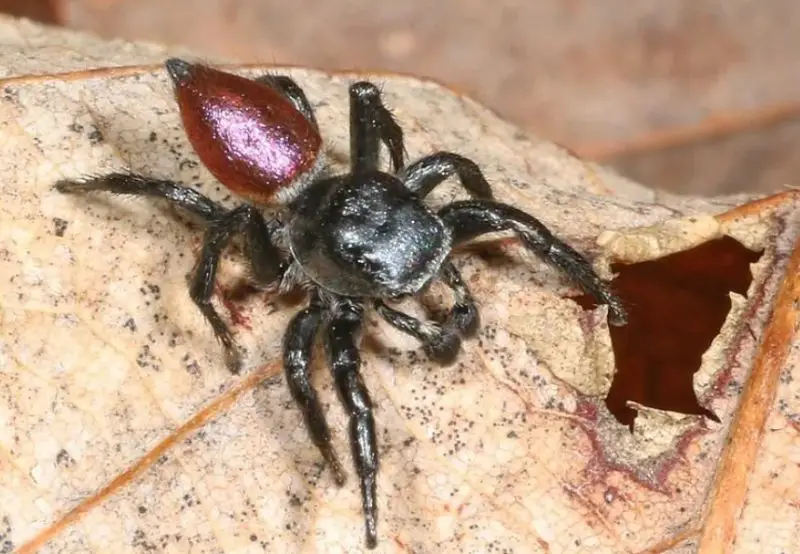
The Hirsute Paradise Spider (Habronattus hirsutus) is a striking jumping spider from the Salticidae family, native to North America. Known for their vibrant colors and elaborate courtship dances, these spiders display fascinating behaviors to attract mates.
While they are not considered medically significant, a bite may cause redness, swelling, and pain at the bite site for up to two days.
Banded Garden Spider

The Banded Garden Spider (Argiope trifasciata), also known as the Banded Orb-Weaving Spider, features a striking appearance with colors ranging from red to brown with white bands or black with yellow and white bands.
These spiders darken with age. Their banded legs match their body colors, and they have a wide, round abdomen. They construct webs near the ground, between tall grass and shrubs, where they sit at the center, capturing insects that become entangled.
Colonus hesperus
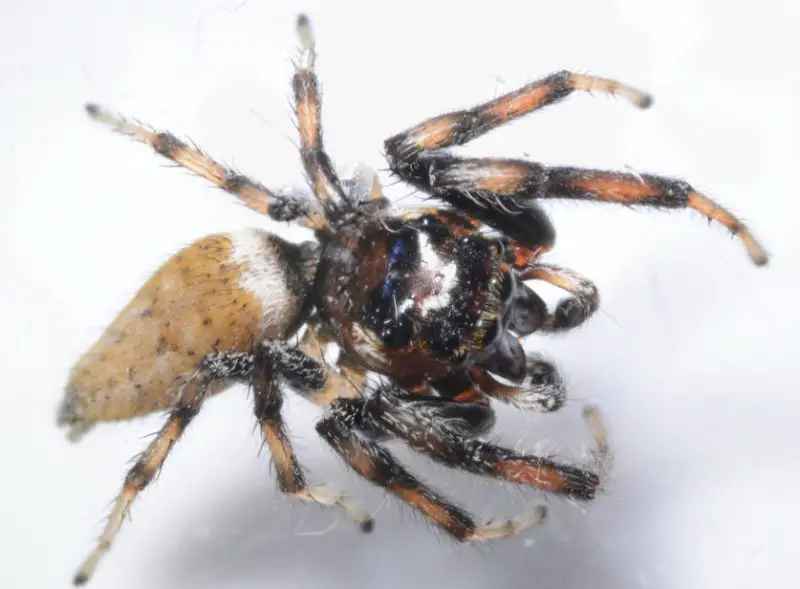
Colonus hesperus is a jumping spider from the Salticidae family, commonly found in Arizona. These spiders are not dangerous to humans and prefer to escape quickly by jumping away if approached.
As ambush predators, they do not use webs to trap prey but instead drag their captures back to their webs to feed in privacy and safety.
False Black Widow
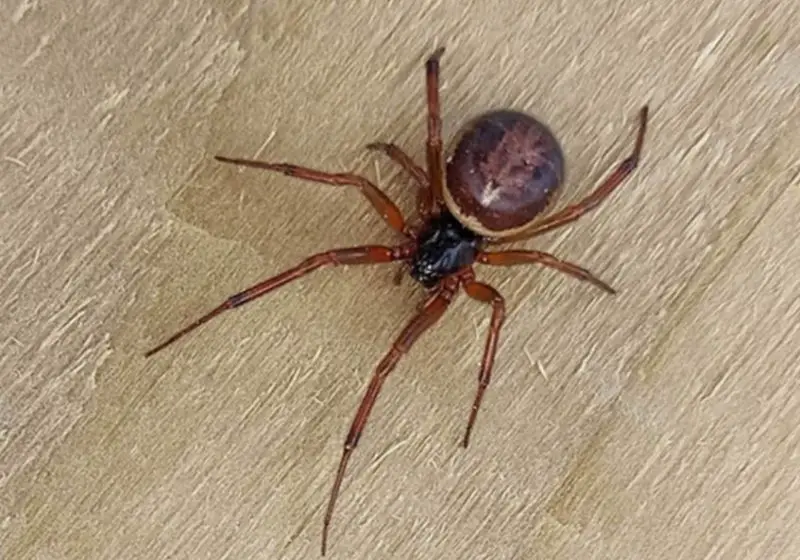
The False Black Widow (Steatoda grossa), also known as the cupboard spider, is commonly found in Arizona. Females can reach up to 10.5mm in body length and have a dark-colored, bulb-shaped abdomen. Their colors vary from black to purple and brown, often with lighter markings.
Unlike the true black widow, they lack the red hourglass shape on their abdomen. Although their bite is considered medically significant, the symptoms are less severe compared to those of a black widow bite.
Carolina Wolf Spider
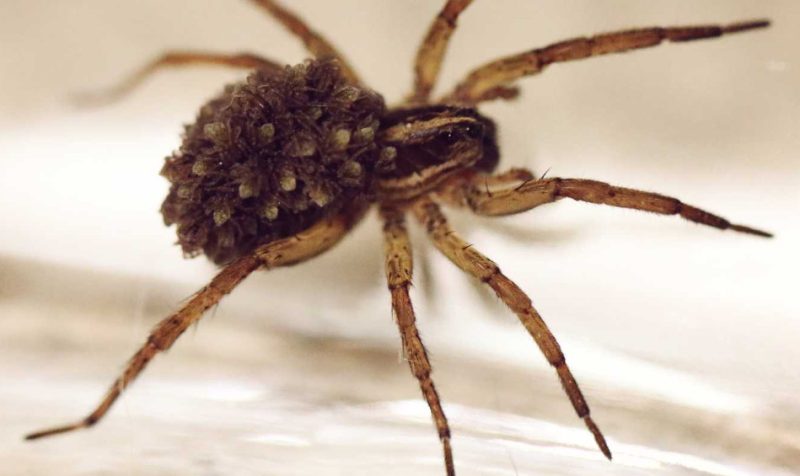
The Carolina Wolf Spider (Hogna carolinensis) is a nocturnal hunting spider that actively searches for food rather than relying on webs to catch prey. Their bodies are black to brown, camouflaging them with the forest floor.
These large, fast, and hairy spiders may occasionally wander into homes in search of prey. Females are larger and darker than males, with a tan line down the center of the head and a chevron pattern on the almond-shaped abdomen.
Chiricahuan Gray Tarantula
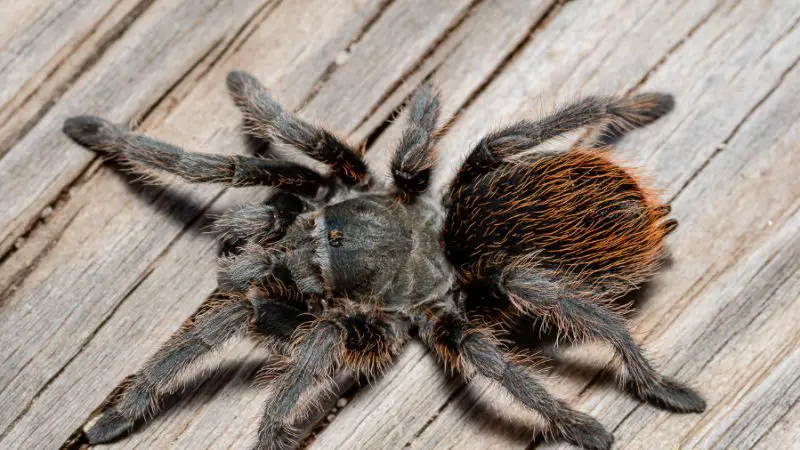
The Chiricahuan Gray Tarantula (Aphonopelma gabeli), formerly known as Aphonopelma sp. Carisbad Green, belongs to the Theraphosidae family and is commonly found in Arizona.
Native to the Chihuahuan Desert, these New World tarantulas are black and gray, with a greenish tint, especially after molting. They can grow up to 6 inches and are not considered harmful to humans.
Golden Jumping Spider
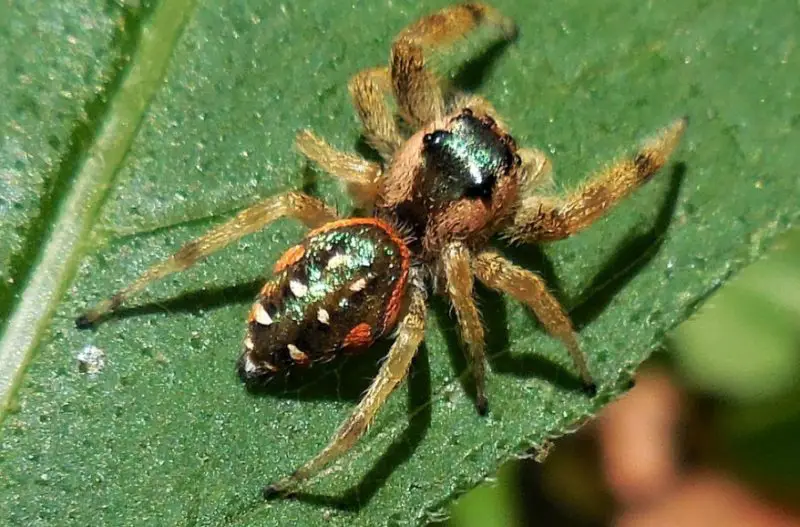
The Golden Jumping Spider (Paraphidippus aurantius), also known as the Emerald Jumping Spider, features distinctive white stripes on the sides of its head and a white border along the top of its abdomen. Females are brown with reflective orange and metallic green on their abdomen and cephalothorax, which glistens under light.
These agile spiders can leap up to four times their body length at high speeds, using this ability to ambush prey and evade predators. They typically do not bite unless provoked, and their bites are not medically significant.
White-banded Crab Spider
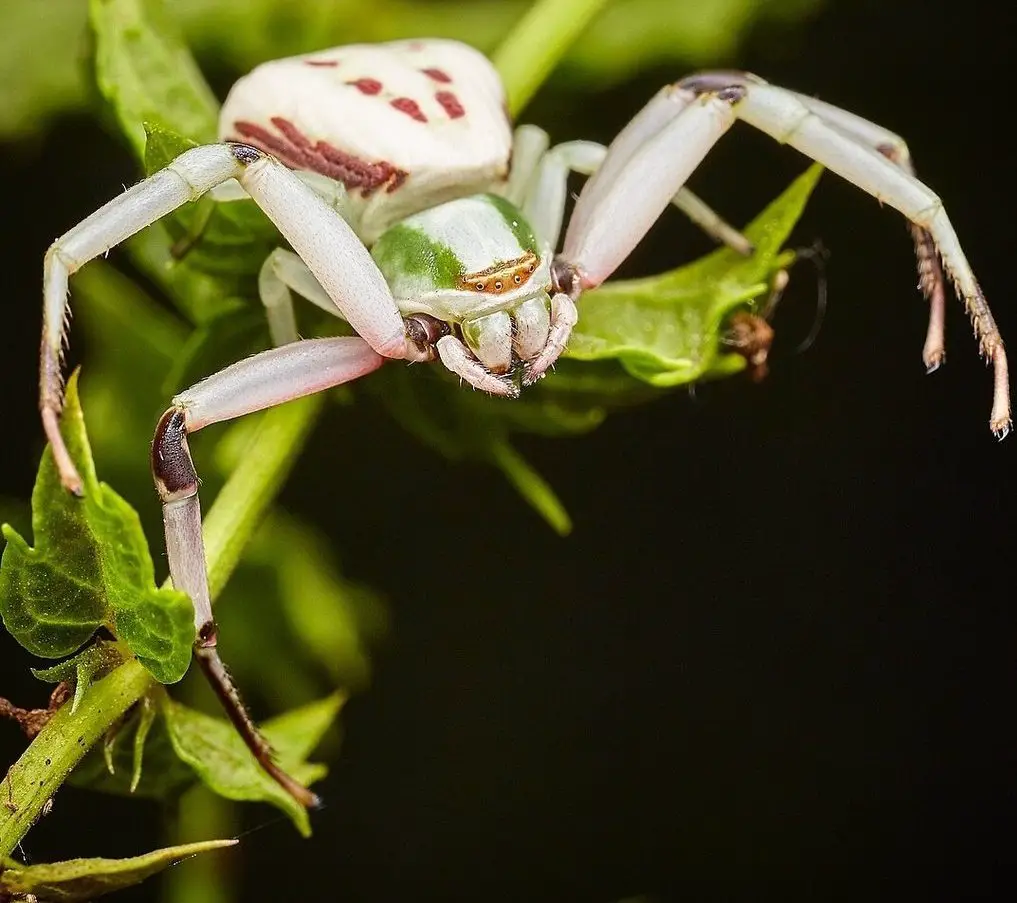
The White-Banded Crab Spider (Misumenoides formosipes) belongs to the Thomisidae family and is recognized by a white line running through its eyes. As sit-and-wait predators, they often hide in flowers and on stalks, using their strong front legs to capture pollinating insects.
Females, which can grow up to 11.3mm and have a rounded triangular shape at their posterior, exhibit variable colors from yellow to white. Males are smaller, up to 3.2mm, with a golden abdomen that does not change color.
Six-spotted Fishing Spider
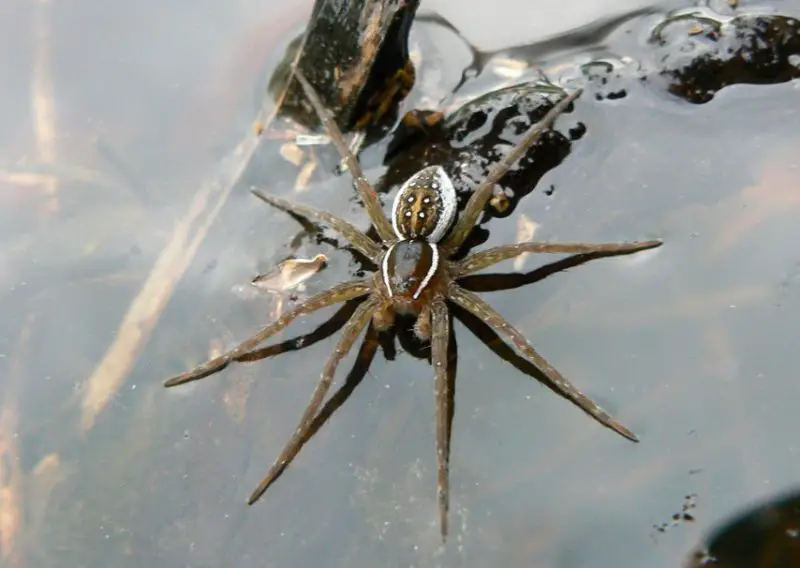
The Six-Spotted Fishing Spider (Dolomedes triton), also known as the Dock Spider, is a member of the nursery web spider family commonly found in wetland habitats across North America. They are large spiders with distinctive gray to brown bodies and excellent vision.
A pale cream to white stripe runs down each side of their head, with light-colored dots on the abdomen and six dark spots underneath. Females can reach 20mm in body length, while males grow to 13mm. These semi-aquatic spiders are typically seen on the surface of the water.
Anyphaena dixiana
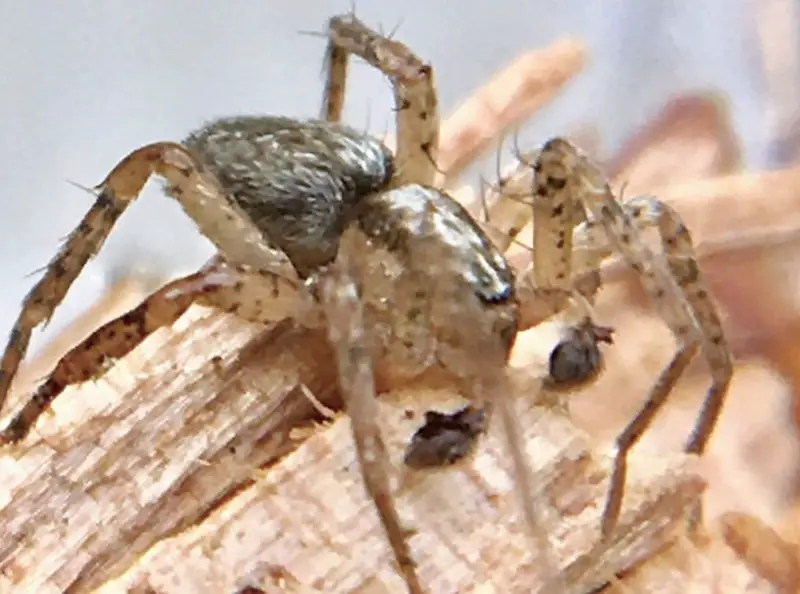
Anyphaena dixiana is a ghost spider from the Anyphaenidae family, with females reaching up to 14mm and males up to 3.85mm in body length. They prefer habitats such as alfalfa fields and are commonly found under dead agave and in homes.
Males are usually encountered from mid-August to mid-May, while females are more commonly seen from late September to late April.
Habronattus pyrrithrix
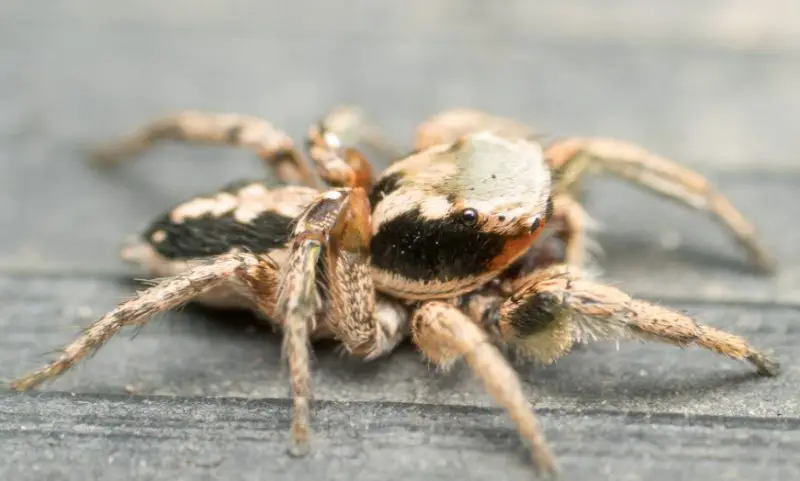
Habronattus pyrrithrix is a jumping spider from the Salticidae family, prevalent in the southwestern United States. Males are characterized by bold black stripes, whereas females have a more uniform color.
These ambush spiders leverage their remarkable jumping skills to capture prey and evade predators. Their agility and speed are key to both hunting and escaping threats.
Koch’s Wolf Spider
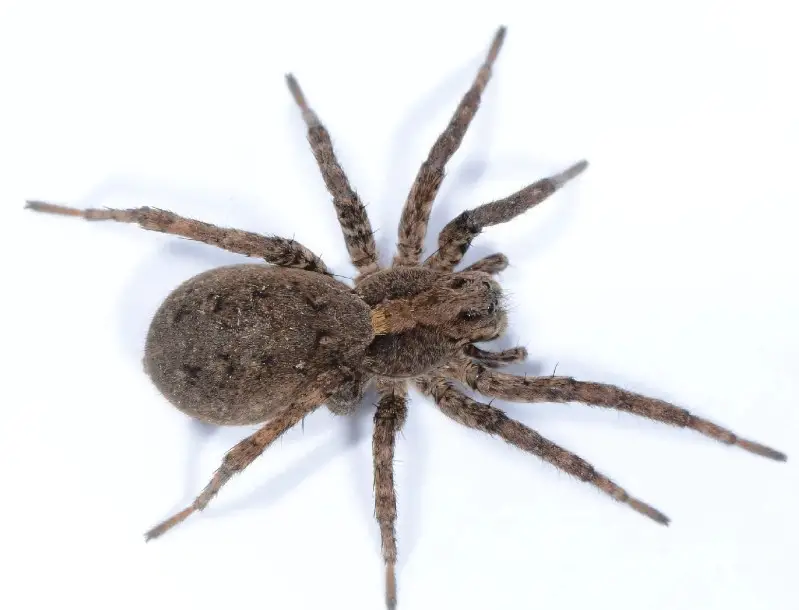
Koch’s Wolf Spider (Alopecosa kochi) belongs to the Lycosidae family and is commonly found in Arizona, particularly in April. These spiders prefer to stay hidden and may occasionally wander into homes in search of insects.
They are nocturnal hunters and not considered medically significant; bites are rare due to their elusive nature.
Long-bodied Cellar Spider

The Long-Bodied Cellar Spider (Pholcus phalangioides), also known as the Daddy Long-Legs Spider or Skull Spider, features a tubular-shaped abdomen and long, spindly legs. These spiders often bounce on their webs to evade detection.
They capture prey while hanging upside down in their webs. Despite being considered venomous, their tiny mouthparts and short fangs are too small to bite humans or inject venom.
Goldenrod Crab Spider
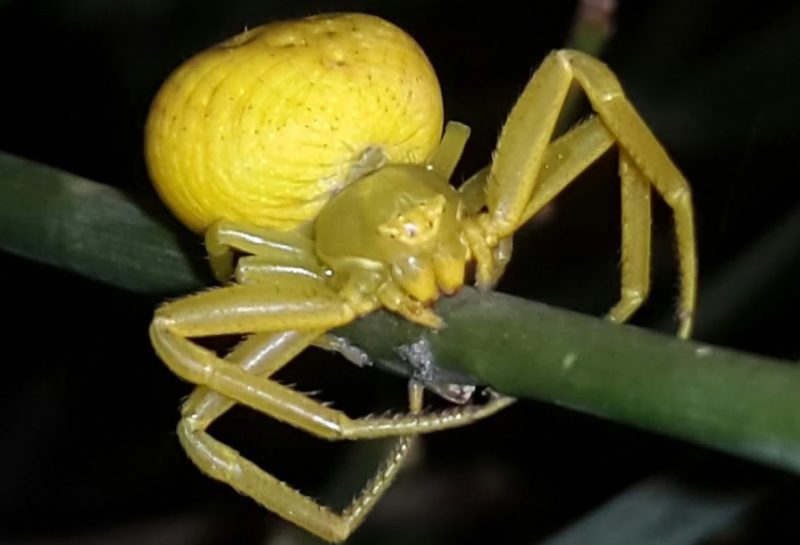
The Goldenrod Crab Spider (Misumena vatia), also known as the Flower Crab Spider, uses camouflage to blend into its surroundings, often changing color over days. This ambush predator waits in flowers, such as goldenrods, for pollinating insects.
It doesn’t spin webs but uses its long front legs to grasp and immobilize prey with a bite before dragging it to its web. Males are dark with black front legs and a pale, red-striped abdomen, while females have pale legs and a rounder abdomen.
Shoreline Wolf Spider
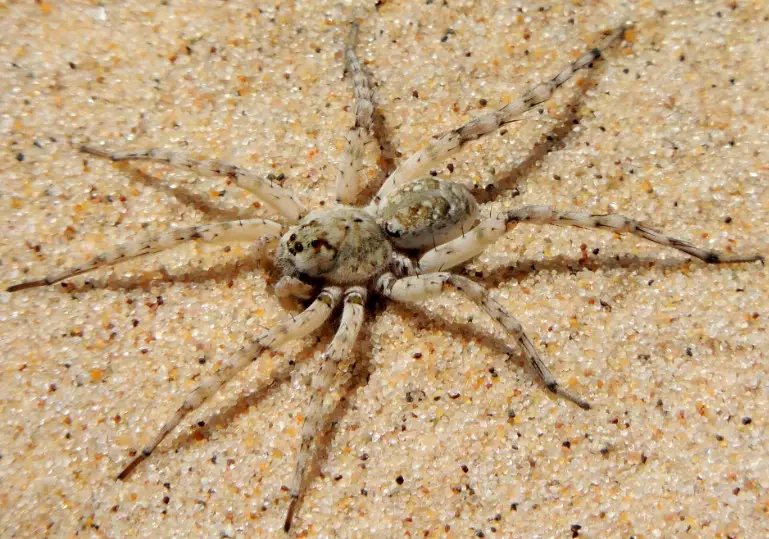
The Shoreline Wolf Spider (Arctosa littoralis), also known as the Beach Wolf Spider, belongs to the Lycosidae family and is commonly found in Central and North America.
Unlike web-building spiders, shoreline wolf spiders are active hunters that patrol the shoreline in search of prey. Their hunting strategy involves scouring the beach rather than relying on webs to catch food.
Apache Jumping Spider
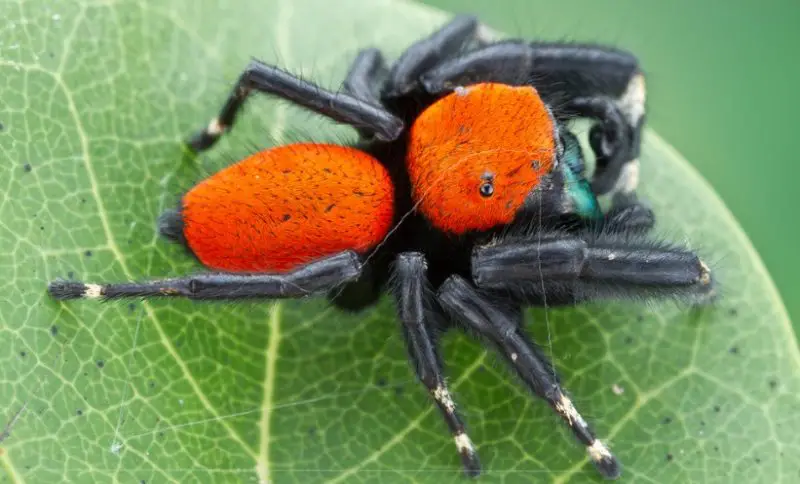
The Apache Jumping Spider (Phidippus apacheanus) belongs to the Salticidae family and is commonly found in the Great Plains, particularly from September to October. With its small size, this spider is known for its impressive jumping ability, using it to ambush prey.
While it is not harmful to humans and generally bites only when provoked, a bite can cause pain and stinging for a few days.
Madera Canyon Tarantula
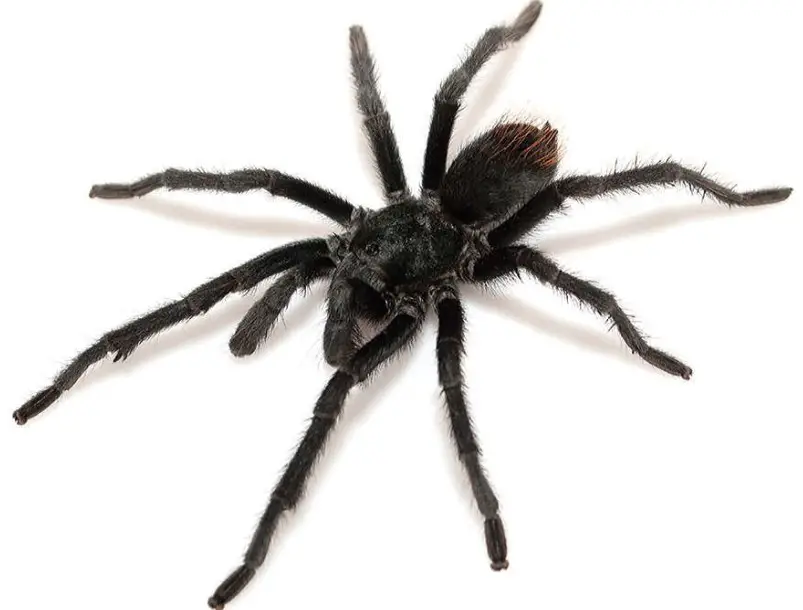
The Madera Canyon Tarantula (Aphonopelma madera) belongs to the Theraphosidae family and is native to Arizona. This New World terrestrial tarantula is unique for being found at high elevations. It prefers dry habitats, often creating shallow burrows under rocks and logs.
Large, black, and hairy, the Madera Canyon Tarantula is not dangerous to humans, making it a relatively non-threatening presence in its environment.
Yellow Garden Spider
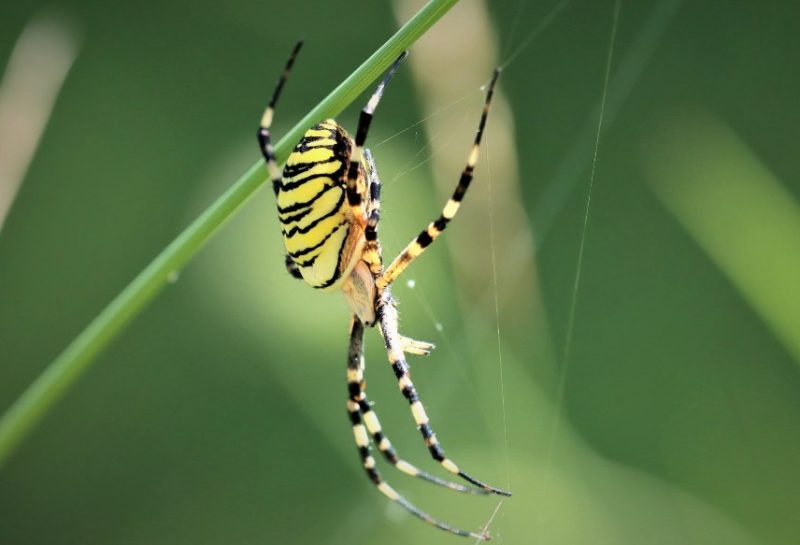
The Yellow Garden Spider (Argiope aurantia), also known as the black and yellow garden spider, writing spider, and several other names, is distinguished by its striking black and yellow coloration. First described in 1833, these spiders have a mostly white cephalothorax.
Females are larger, reaching up to 1.10 inches (28mm) in body length, while males are smaller, at 0.35 inches (9mm). Despite their size, they are harmless to humans, with bites comparable to a bumblebee sting.
Cat-faced Orbweaver
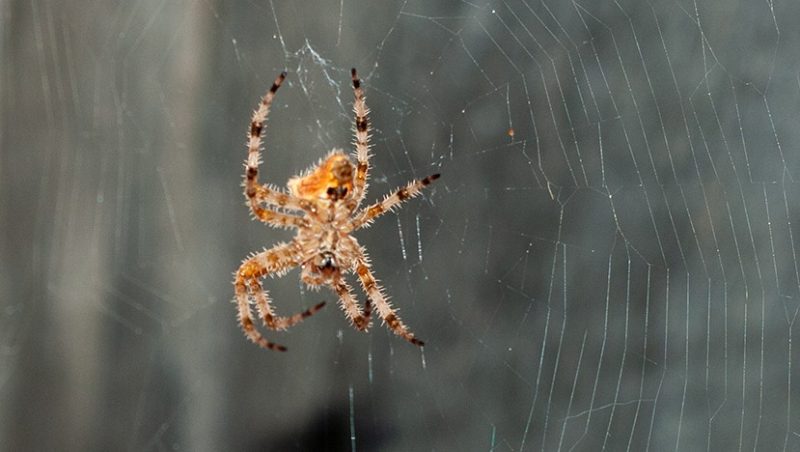
The Cat-faced Orbweaver (Araneus gemmoides), also known as the jewel spider, is harmless to humans and notable for its unique appearance. The spider’s abdomen features two bumps that resemble a cat’s face, complete with “ears.”
These spiders commonly hang upside down in their webs and display a range of colors from rich brown to pale shades. Their distinctive markings and colors make them a fascinating sight in gardens and wooded areas.
Ribbon Jumping Spider

The Ribbon Jumping Spider (Metacyrba taeniola) belongs to the Salticidae family and is known for its impressive jumping skills. Females grow up to 0.28 inches (7.2mm), while males reach about 0.24 inches (6mm).
Harmless to humans, these spiders use their agility to ambush prey and evade threats, including curious people. Instead of using webs to catch prey, they drag their catch back to their web for consumption in safety and privacy.
Agave Jumping Spider
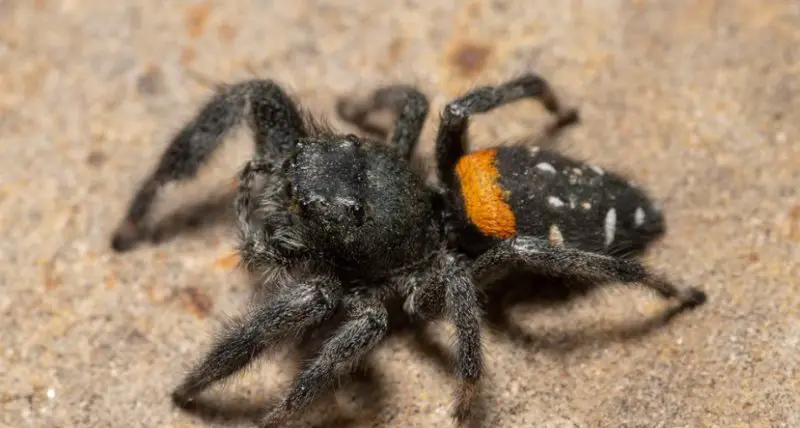
The Agave Jumping Spider (Paraphidippus basalis) is a member of the Salticidae family, commonly found in New Mexico and Arizona. Preferring rosette-forming plants like yuccas and agaves, these spiders ambush their prey by leaping at them while releasing a silk strand to secure the catch.
This silk helps hold the prey until the spider can pull it back to its web for consumption.
Habronattus clypeatus
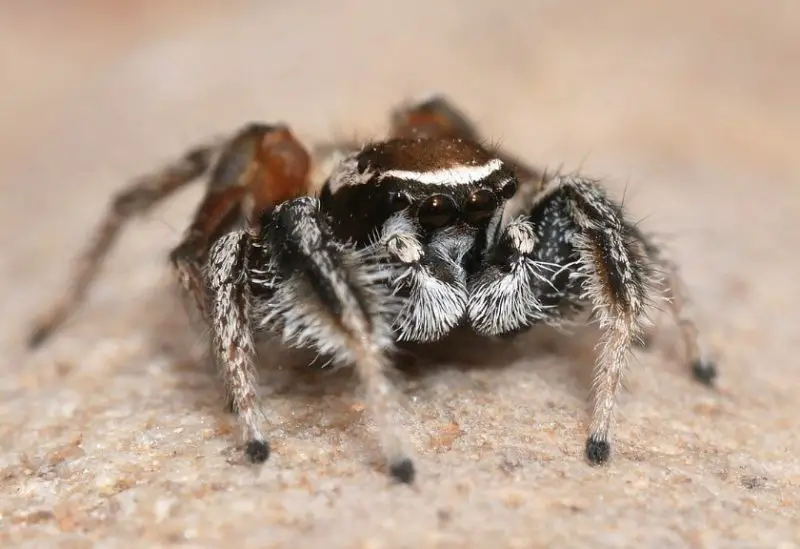
Habronattus clypeatus is a common jumping spider in Arizona known for its impressive jumping ability, reaching up to four times its body length.
These spiders use their agility to ambush prey and evade threats. While they will bite if provoked, the bite typically causes localized stinging and redness lasting a few hours.
California Flattened Jumping Spider
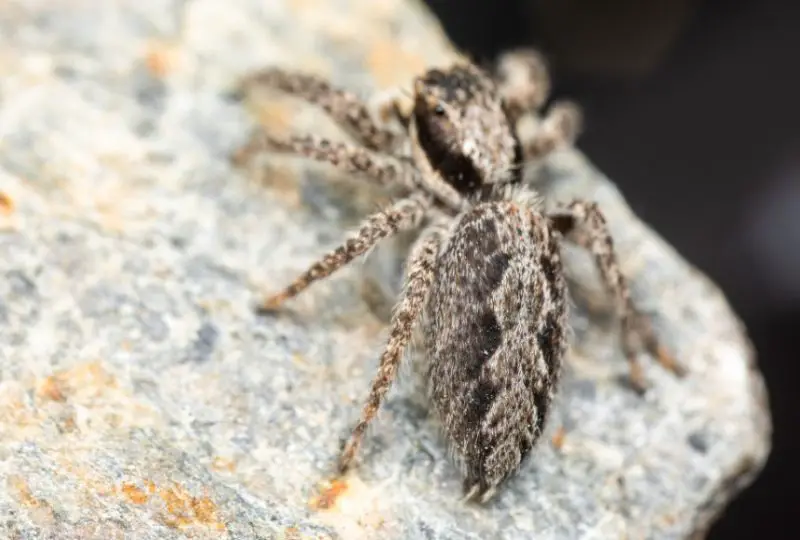
Platycryptus californicus, commonly known as the California Flattened Jumping Spider, is found in Arizona and features a distinctive central gray pattern on its cephalothorax and abdomen, resembling a leaf.
The rest of its body is primarily black, with some spiders showing orange spots. Its legs exhibit gray and black nuances, and a fine white stripe along the cephalothorax.
These spiders are agile hunters, preying on other spiders without using webs. While they can bite if handled roughly, the bite generally causes only a sharp pain that fades within a few hours.
Desert Tarantula

The Desert Tarantula (Aphonopelma iodius), also known as the California Tarantula, is common in both desert and woodland habitats and sometimes ventures indoors.
Females typically have a body size of around 2 inches, with bright brown thoraxes and dark brown to black abdomens. Males, in contrast, display tan to brown bodies and dark brown legs. Despite their intimidating appearance, they are generally not aggressive.
Desert Red Jumping Spider
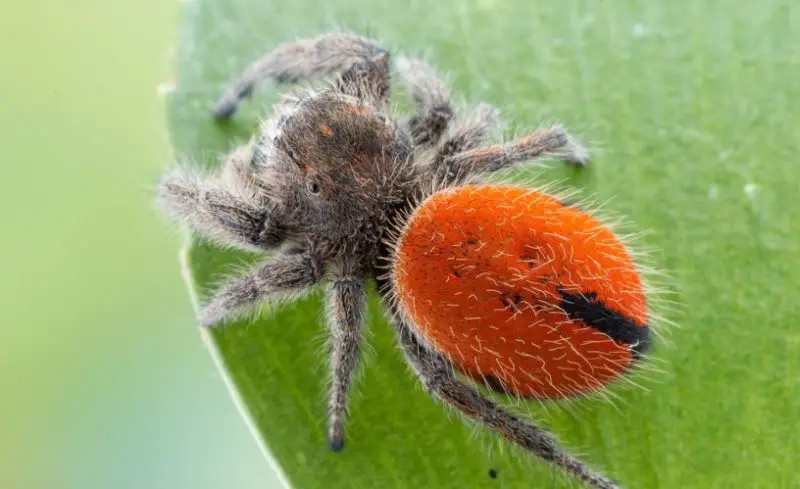
The Desert Red Jumping Spider (Phidippus ardens) is a striking species found in Arizona, often mistaken for the venomous Black Widow due to its similar color pattern. It features a red abdomen with black stripes or an orange-red hue, distinguishing it from the Black Widow’s hourglass shape. Males are also noted for their blue mouthparts.
Despite its intimidating appearance, the Desert Red Jumping Spider is not harmful to humans.
Spotted Orbweaver
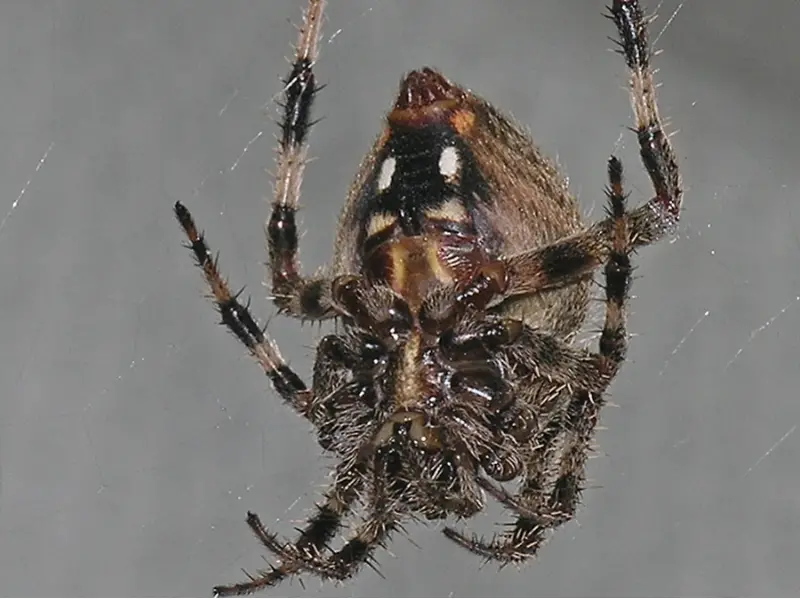
The Spotted Orbweaver (Neoscona crucifera), also known as the Barn Spider, is a small spider characterized by its brown body with white spots on the abdomen’s underside and black dots on the dorsal side and legs.
Typically found in attics, garages, and around farms, these spiders build durable webs in areas where they are less likely to be disturbed. Adults measure between 0.4 and 0.7 inches in size.
Desert Blonde Tarantula
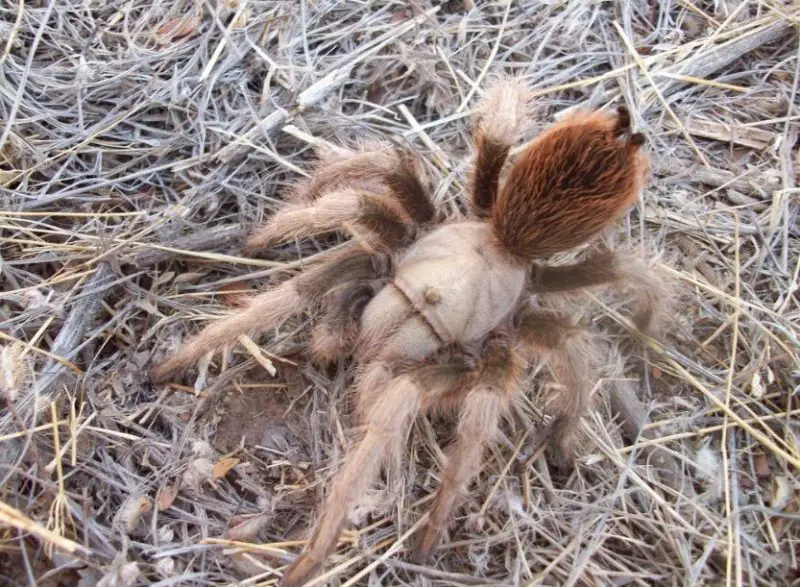
The Desert Blonde Tarantula (Aphonopelma chalcodes), also known as the Arizona Blond Tarantula, is a large, burrowing spider commonly found in Arizona and New Mexico. Females are tan, while males have a red abdomen, copper head, and black legs.
These nocturnal spiders live in deep burrows to cope with desert conditions. Despite their intimidating size, they are not often encountered due to their nocturnal habits.
Western Black Widow
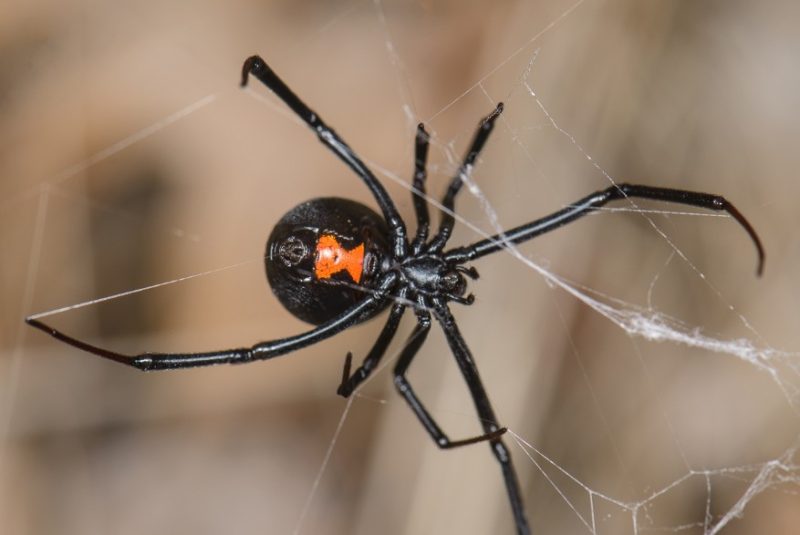
The Western Black Widow (Latrodectus hesperus) is a venomous spider found in North America, with females reaching up to 16mm in body length.
Females are easily recognized by their shiny black bodies and the distinctive red hourglass shape on their abdomens, which may sometimes be yellow or white. Males are tan with striped abdomens and are less dangerous. Bites from females are rare but require immediate medical attention.
Giant Crab Spider
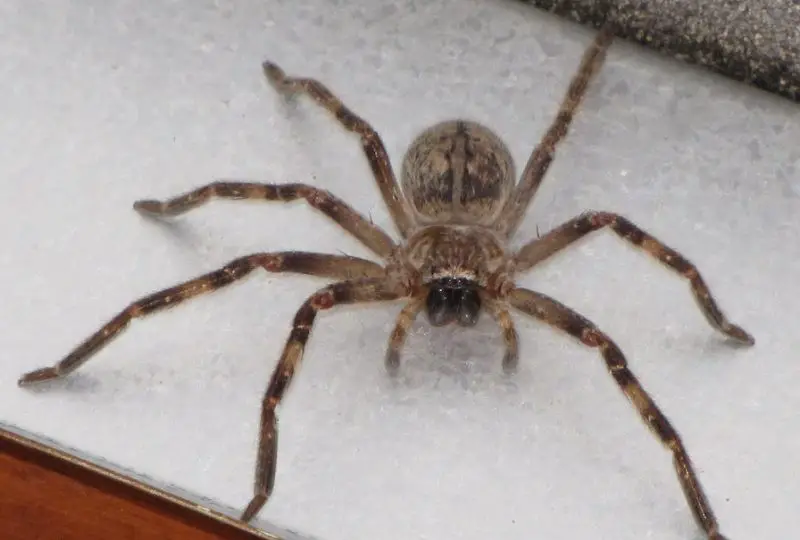
The Giant Crab Spider (Olios giganteus), also known as the Golden Huntsman Spider, is one of North America’s largest spiders. With a body that can fit in an adult’s palm, these spiders are sandy brown with a darker stripe down their rounded abdomen.
Known for their speed and ability to jump when ambushing prey, they prefer desert areas but occasionally wander into homes. Despite their size, they are not dangerous to humans.
Western Spotted Orbweaver
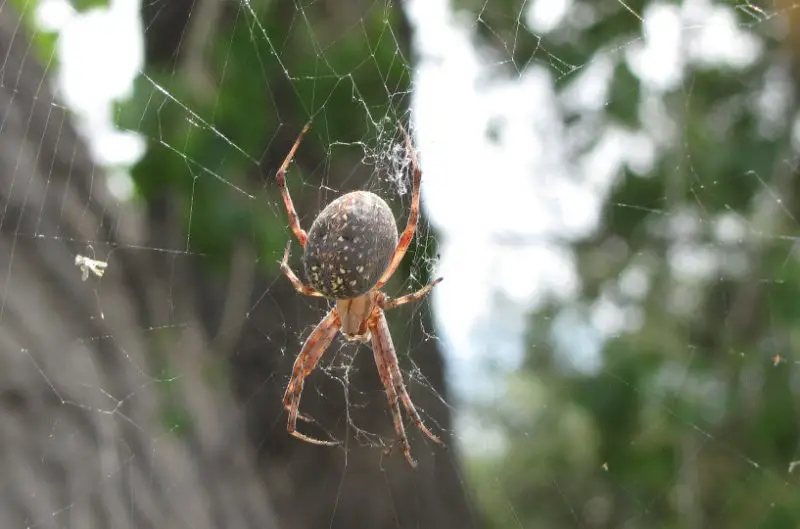
The Western Spotted Orbweaver (Neoscona oaxacensis), also known as the Zig-Zag Spider, is a member of the orb-weaver family, famous for their circular webs. They have a bulb-shaped abdomen with brown and yellow patches, and a brown line running through yellow triangles.
Often found in gardens, parks, and open fields, they are most visible during autumn when females lay their eggs. These spiders prefer areas with sparse foliage and often position themselves upside down in the center of their webs.
Green Lynx Spider

The Green Lynx Spider (Peucetia viridans) is a vibrant spider with females growing up to 0.87 inches (22mm) and males reaching 0.47 inches (12mm). Characterized by a red patch between the eyes, red body spots, and white hairs in the eye region, they have six chevron markings under the abdomen.
Their green to yellow legs are adorned with black spines and spots. These spiders can change color from green to pale yellow with red streaks, with gravid females adapting their color based on their environment.
Camptocosa parallela

Camptocosa parallela is a small wolf spider found in Mexico and the United States, with females reaching about 7mm in body length and males around 6mm. Both sexes look quite similar, but adult males can be distinguished by the black hairs on their tibia.
These spiders are agile hunters, often found in various habitats, and are known for their characteristic wolf-like hunting behavior.
Arizona Black Hole Spider
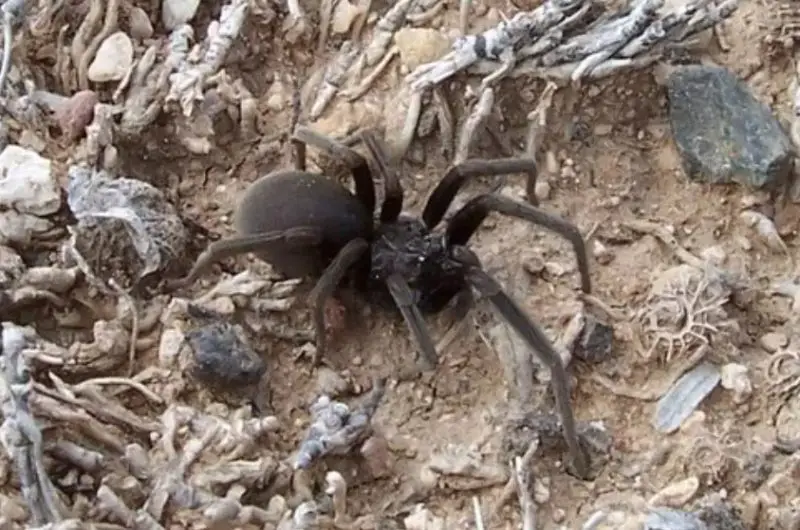
The Arizona Black Hole Spider (Kukulcania arizonica) is a velvet-black spider from the Filistatidae family, found in Arizona and nearby states like Nevada, California, and New Mexico.
Females are larger, reaching up to 13mm in body length, while males are smaller with a thinner body and longer legs. These spiders often spin their webs in building crevices, making their homes in hidden, dark areas.
Varacosa gosiuta
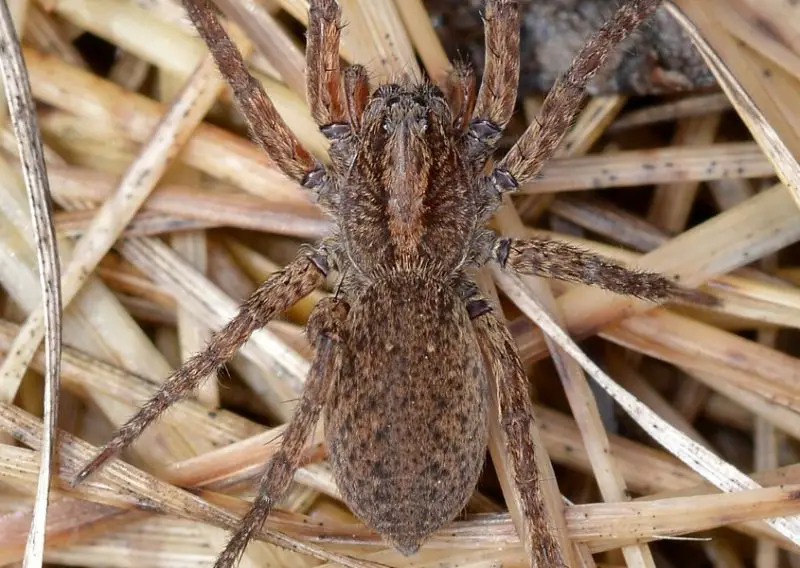
Varacosa gosiuta is a wolf spider from the Lycosidae family, commonly found in Arizona. First described in 1942, it is one of six wolf spider species native to North America.
Like other wolf spiders, Varacosa gosiuta is a ground-dwelling hunter, known for its speed and agility. These spiders are typically encountered in various habitats across the region.
Grand Canyon Black Tarantula
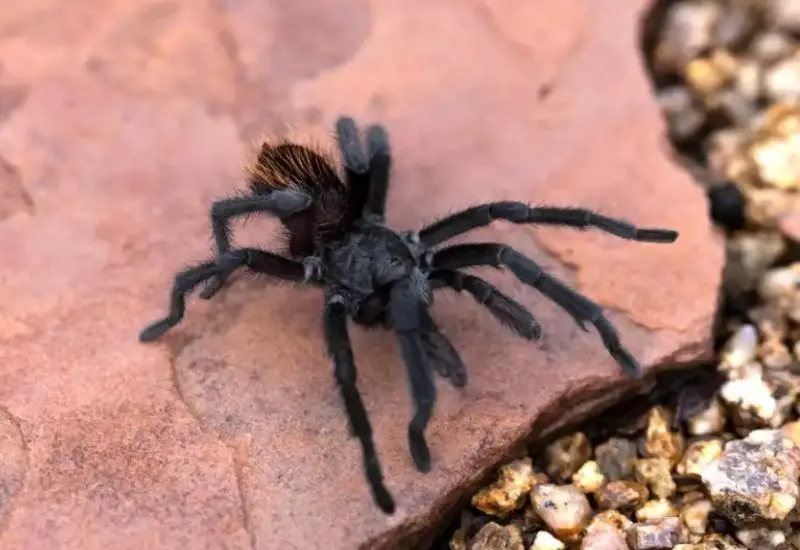
The Grand Canyon Black Tarantula (Aphonopelma marxi) is a large, hairy tarantula, ranging in color from dark brown to black with red to orange hairs on its abdomen. Females are larger, with carapaces up to 3.5cm in length, while males reach about 10.5mm.
This spider is widely distributed in northern Arizona but is rarely encountered due to its preference for staying hidden in deep burrows, which are difficult to locate.
Tucson Bronze Tarantula

The Tucson Bronze Tarantula (Aphonopelma vorhiesi) is a large, docile spider with a black to brown body and black hairs on its legs. These spiders are not aggressive unless threatened and are rarely encountered as they prefer to stay hidden.
They typically create burrows in tree trunks, under stones, and logs, making them elusive in their natural habitat.
Phidippus carneus

Phidippus carneus is a jumping spider from the Salticidae family commonly found in the United States. Known for their remarkable jumping ability, these spiders can leap up to four times their body length at high speeds to ambush prey or escape from predators, including curious humans.
They typically drag captured prey back to their web. While they can bite if provoked, their bites are not considered medically significant, and they are generally not dangerous to humans.


